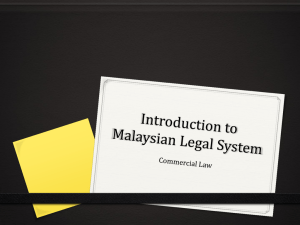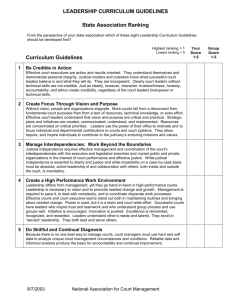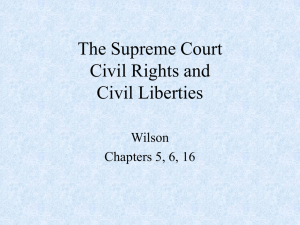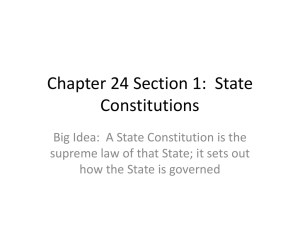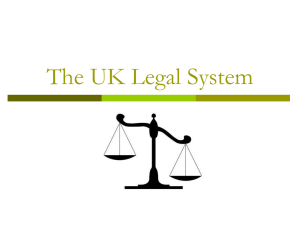China`s Judicial System
advertisement
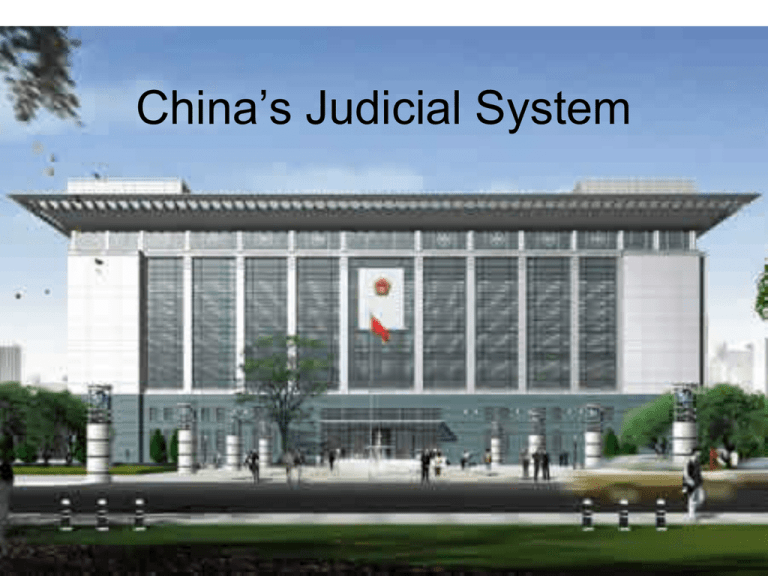
China’s Judicial System The Functions of Courts • Authoritarian judiciaries have been found to • establish social control • promote regime legitimacy • control administrative agents • facilitate economic development • help to implement controversial policies Broadly speaking ... • China’s judicial system includes: – People’s Courts – People’s Procuratorates – Public Security organs What do they report to? People’s Court People’s Procuratorate People’s Congress Government (including Public Security organs) Effective Party Control • Political-Legal Committees at every level of the Chinese Communist Party hierarchy • versus the goal of “judicial professionalism” – courts should be staffed and operated by legally trained judges – the influence of non-lawyers or extra-legal concerns on adjudication should be kept to a minimum Strictly speaking ... • The judicial system only includes the People’s Court system • The People’s Court System includes: – Supreme People’s Court – Local People’s Courts – Special Courts • 10 Maritime Courts • 75 Railway Courts (became local courts in 2012) • Military Courts 4 Levels of People’s Courts Court Supreme People’s Court Higher People’s Court Intermediate People’s Court Basic People’s Court level Center Province City County or district Hierarchy of the Judicial System • In common law systems, a decision made by a superior court is a binding precedent that all inferior courts are required to follow • In China, as in other continental legal systems, this doctrine of binding precedents is not applied • However, the appeal mechanism in effect renders the decisions of higher courts binding on lower courts Hierarchy of the Judicial System • The Chinese four-level court system only allows one appeal to be made to a court of higher ranking • which minimizes the impact of the provincial high courts’ or the Supreme People’s Court’s decisions on those of lower level courts Hierarchy of the Judicial System • Compared with the organization of judiciaries in other countries • there appears to be a gap in the formal legal control over lower courts by provincial high courts and the Supreme People’s Court Judicial Reforms since 1990s • predominantly carried out in a top-down manner • Courts have developed into specialized legal institutions that are staffed by legally trained judges • Chinese courts have expanded their jurisdiction and their caseloads have proliferated significantly 1st Trial Cases Administrative Litigation Law • Passed in April 1989 and implemented in October 1990 • Gives the court the power to uphold, revoke, revise, or compel administrative actions • One of the few state-sanctioned means for private citizens to challenge the actions of government officials on many regulatory and administrative issues Administrative Litigation Cases Plaintiffs in Admin. Litig. Cases After 17th Party Congress (’07) • The Central Political-Legal Committee adopted a new document on judicial reform • The “three supremes” doctrine: 1.the supremacy of the CCP 2.the supremacy of the people’s interests 3.the supremacy of the constitution and law Populist Turn of Judicial Reform • Judges are reminded of the need to consider the social and political consequences of their judgments • To achieve a “harmonious society” and social stability, mediation is regarded as a more suitable tool than litigation The Qi Yuling case (2001) • In 2001, the Supreme People’s Court attempted to judicialize the constitution in the form of a “reply” to a provincial higher people’s court • In 2008, the Supreme People’s Court repealed the “reply” • Constitutionality


